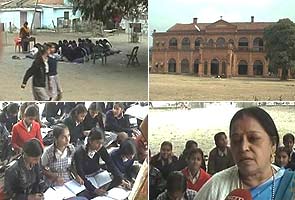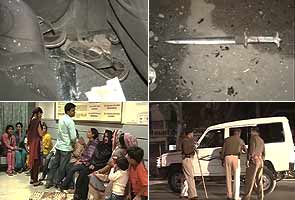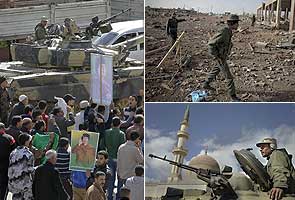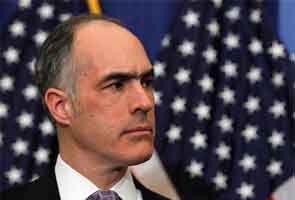
The former president, a bugaboo for George W. Bush during his rush to war in Iraq, on Monday becomes France's first former head of state to go on trial since its Nazi-era leader was exiled.
That is, if the whole case isn't derailed by a last-minute protest by another defendant.
If the trial goes ahead as planned, Chirac, 78, faces a month in court on charges that he masterminded a scheme to have Paris City Hall pay for work that benefited his political party when he was mayor - before he became president in 1995
A prison term is seen as highly unlikely, but in principle if convicted, Chirac could be jailed for up to 10 years and fined euro150,000 ($ 210,000).
France's restive political circles are gearing up for next year's presidential race, but the fallout from this trial is unlikely to hit anyone other than Chirac and the nine other defendants including a grandson of Gen. Charles de Gaulle and a former left-wing labour union leader.
Still, the trial looms as an embarrassing coda to Chirac's 12-year presidential term, potentially denting his legacy, recent philanthropic work and image as one of France's most popular personalities since he left office.
The trial will also shine a spotlight on the underside of high-level politics that could be uncomfortable background noise for Chirac's successor and one-time protégé, President Nicolas Sarkozy, who wants to rebuild his depleted poll numbers before a possible re-election bid.
The trial fuses two separate but similar cases.
One of the other defendants, former Chirac aide Remy Chardon, says the two cases shouldn't be combined. His lawyer told The Associated Press he will ask the judges Monday to decide whether the decision was constitutional, which could throw the whole trial into disarray.
In the first case, investigating magistrate Xaviere Simeoni in Paris has focused on claims that Chirac had City Hall pay for 21 contract hires who never worked for the city but instead worked for his party, then called RPR. He faces charges of embezzlement and breach of trust.
Simeoni, in her order for Chirac to stand trial, wrote that he was the "conceiver, author and beneficiary" of that system.
The other case, led by investigating judge Jacques Gazeaux in the western Paris suburb of Nanterre, centres on seven jobs at Chirac's former party said to be improperly paid for by City Hall. Chirac is accused of illegal conflict of interest in that case.
That case netted a conviction and temporary ban from political office in 2004 for Chirac's long-time political ally Alain Juppe, a former prime minister who recently returned in a big way to political life -- and is now foreign minister.
Chirac will answer for only a fraction of the scandals that have hounded him over the years: the others were either thrown out for a lack of evidence or had exceeded the statute of limitations. Even for those going to court, he will answer for just 21 total jobs out of 481 turned up in the investigation by Simeoni's team: Those before 1992 are too old to warrant prosecution.
Plus, under one of the unusual aspects of France's legal system, the Paris prosecutor, Jean-Claude Marin, will actually argue against a conviction. He argues there's not enough evidence. It's up to the judges to determine now whether there is.
Additionally, while not acknowledging wrongdoing, Chirac and his party struck a deal last year with City Hall -- now run by the opposition Socialists -- to pay back an $2.2 million calculated to be the amount paid in the jobs in question. As a result, the city won't be among Chirac's accusers in court.
For years, investigating magistrates had sought to prosecute Chirac, who hid behind his presidential immunity during his term from 1995 to 2007.
Chirac has repeatedly denied any wrongdoing, insisting that France had no judicial rules laying out a framework for party financing at the time, and that the expenses were approved by the city council.
The behaviour smacks of an era when France's economy was fresh off a 30-year post-war boom and political largesse was commonplace, both on left and right. Chirac ran Paris like a fiefdom, and made it his power base.
The trial, while focusing on his pre-presidency years, will inevitably raise the hypothetical question: Would Chirac have become head of state had he not -- if as alleged -- dabbled in corruption to build his political machine?
He will be the first former French head of state to stand trial since Marshal Philippe Petain, the leader of France's Nazi collaborationist regime, was convicted of treason and shipped into exile after World War II.
The debonair Chirac has been one of France's most towering political figures for at least 35 years: president for 12 years, prime minister twice, four-time presidential candidate, mayor of its biggest city for 18 years, Cabinet minister, National Assembly lawmaker and regional councillor.
Some say the case amounts to a test for the French judicial system as well as muscle-flexing by France's independent-minded investigative judges, who have often run afoul of conservative governments in recent years.
Chirac's five-lawyer legal team has grown increasingly silent about the case as the trial nears, and Chirac wants to keep his comments for the court hearings, scheduled to run through April 8.
His health has been in question. In January, Chirac told a French TV station he was doing "fine" and denied he was too feeble to stand trial, and his wife denied a report saying he might have Alzheimer's disease as "a lie." Chirac was hospitalized for a week in 2005 for a vascular problem that has never been fully explained.
He is also said to not be letting on much about his state of mind ahead of the proceedings. Chirac spokeswoman Benedicte Brissart told The Associated Press only that he views the trial as "an ordeal."
One major question is how much the proceedings -- and a possible conviction -- could stain his legacy as president.
In his term, Chirac was perhaps best known internationally for vocally opposing Bush's drive to war in Iraq, and earlier, for resuming French nuclear tests in the South Pacific and recognizing the French state's responsibility in the Nazi deportation of Jews during World War II.
Chirac, in recent years, has morphed from his image as a backslapping bon vivant with an uncanny knack for the political game into a more avuncular former president widely appreciated for his service and style.
Jean-Francois Probst, who was a high-ranking Paris City Hall official under Chirac in the 1980s and author of two books on him, said he thought the ex-president was "relatively calm" going into the proceedings.
"He'll explain what he believes in his conscience is the truth," he told the AP. "But it's never fun to go to trial -- he's never been there in his life."

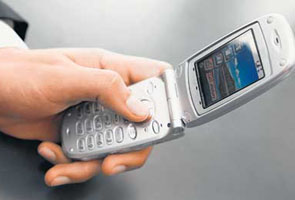
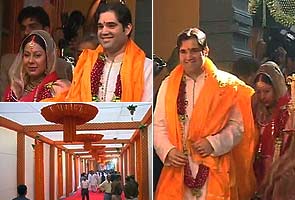
 Click to Expand & Play
Click to Expand & Play
